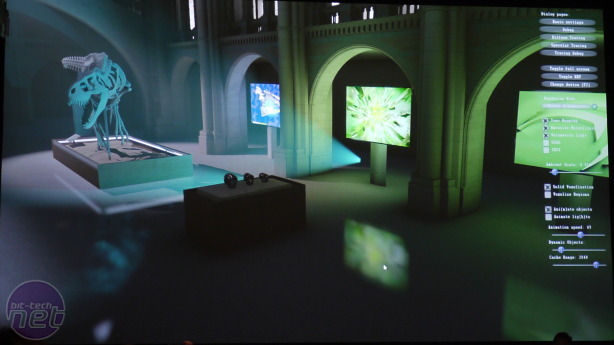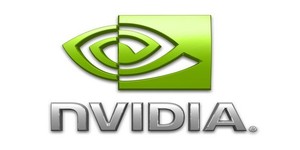
Nvidia has announced FLEX, a new unified approach to its PhysX physics simulation SDK, along with two new simulation technologies: FlameWorks and GIWorks.
FLEX aims to unify the various physics simulation technologies previously demonstrated by the company into one SDK. These include things like fluid simulation, solid body interaction, soft body interaction, cloth simulation and more.
The result is a single integrated SDK that 'just works', allowing for easy creation of complex physical interactions such as solid objects floating in water and crashing into each other, or water pouring across a cloth. Perhaps the best example, though, is a water balloon. The single SDK can be used to create a bouncing ball of water that can be popped and pierced - producing a spurt of water.
Tony Tamasi, Nvidia SVP for Content and Technology, described how the new technology was particularly exciting because it allowed for the creation of realistic fluid filled bodies that explode or spurt blood when you shoot them - gruesome but impressive.
Also announced today at the company's The Way It's Meant To Be Played press event in Montreal was GIWorks, a new global lightning SDK that aims to make true global illumination available in real time. Normally global illumination - the use of dyanmic lighting rather than pre rendered lighting effects - is too computationally intensive to use for all aspects of games but Nvidia thinks it has cracked it with GIWorks.

Finishing off today's trio of announcements is Flameworks, a new real time volumetric flame simulation technology that the company claims provides cinema quality flame simulation but that will run on current graphics hardware.

Nvidia showed demos of all three technologies running on a single GTX Titan, and the effects were all very impressive. It remains to be seen how well, and how quickly, they can be integrated into upcoming games, though.
One final tidbit that Nvidia revealed was a demo of FaceWorks, the company's sophisticated facial animation technology running on Project Logan, the upcoming replacement for Tegra 4. Project Logan, which is likely to come to market as Tegra 5, is the first of Nvidia's mobile SoC to use a Kepler based GPU. Nvidia claims it can run Faceworks yet the chip is still a sub 10W part.
Nvidia Project Logan running Faceworks
FLEX aims to unify the various physics simulation technologies previously demonstrated by the company into one SDK. These include things like fluid simulation, solid body interaction, soft body interaction, cloth simulation and more.
The result is a single integrated SDK that 'just works', allowing for easy creation of complex physical interactions such as solid objects floating in water and crashing into each other, or water pouring across a cloth. Perhaps the best example, though, is a water balloon. The single SDK can be used to create a bouncing ball of water that can be popped and pierced - producing a spurt of water.
Tony Tamasi, Nvidia SVP for Content and Technology, described how the new technology was particularly exciting because it allowed for the creation of realistic fluid filled bodies that explode or spurt blood when you shoot them - gruesome but impressive.
Also announced today at the company's The Way It's Meant To Be Played press event in Montreal was GIWorks, a new global lightning SDK that aims to make true global illumination available in real time. Normally global illumination - the use of dyanmic lighting rather than pre rendered lighting effects - is too computationally intensive to use for all aspects of games but Nvidia thinks it has cracked it with GIWorks.

Finishing off today's trio of announcements is Flameworks, a new real time volumetric flame simulation technology that the company claims provides cinema quality flame simulation but that will run on current graphics hardware.

Nvidia showed demos of all three technologies running on a single GTX Titan, and the effects were all very impressive. It remains to be seen how well, and how quickly, they can be integrated into upcoming games, though.
One final tidbit that Nvidia revealed was a demo of FaceWorks, the company's sophisticated facial animation technology running on Project Logan, the upcoming replacement for Tegra 4. Project Logan, which is likely to come to market as Tegra 5, is the first of Nvidia's mobile SoC to use a Kepler based GPU. Nvidia claims it can run Faceworks yet the chip is still a sub 10W part.
Nvidia Project Logan running Faceworks

MSI MPG Velox 100R Chassis Review
October 14 2021 | 15:04






Want to comment? Please log in.